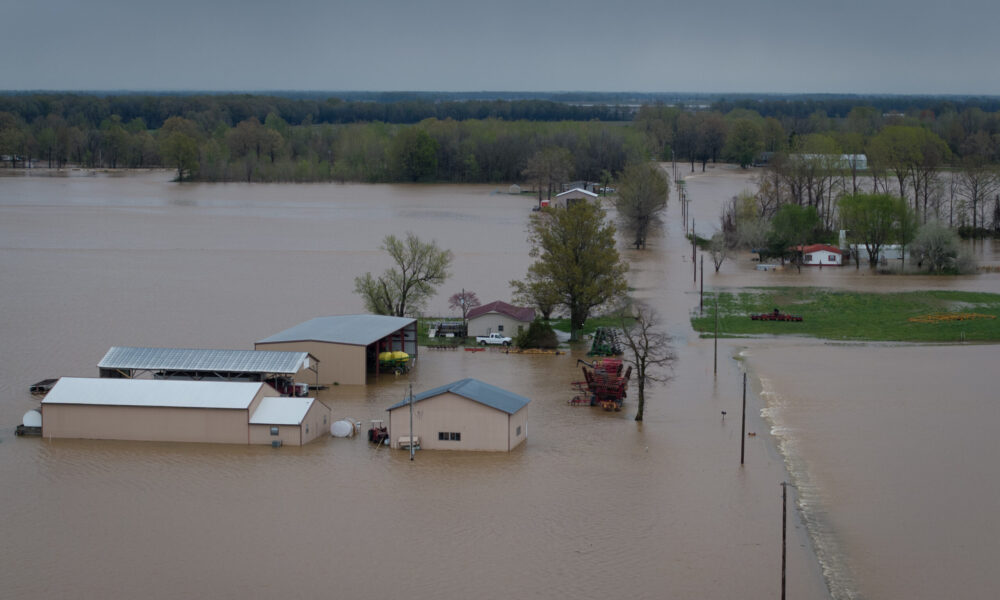If we were living in normal legislative times, the US Congress would likely be moving towards the introduction of a new food and farm bill this year. We should have had one almost two years ago, after all: The last bill was passed in 2018, expired in 2023, and has been extended twice, with the most recent extension scheduled to end in September.
Of course these are not normal times, and with everything else that’s currently happening throughout the federal government under the Trump administration—including the lengthy budget reconciliation process, an ongoing federal funding freeze impacting agricultural programs, and staff cuts affecting the US Department of Agriculture (USDA)—the food and farm bill hasn’t been nearly as front-and-center as it normally would be at this point in the legislative calendar.
But one thing that’s proceeding as usual this year is the introduction of what are called “marker bills,” or pieces of legislation that members of Congress hope to get included in the language of the food and farm bill once we have one. One such marker bill is the Agriculture Resilience Act.
Building farms that can withstand the impacts of climate change
The Agriculture Resilience Act, or ARA, is a detailed, climate-focused bill that, if enacted, would achieve an array of important climate- and conservation-related goals. It was introduced on April 22 (Earth Day!) by Representative Chellie Pingree (D-ME) and Senator Martin Heinrich (D-NM).
In announcing the bill’s introduction, Pingree’s office noted that the legislation “aims to empower farmers with the incentives they need to stay in business, fight climate change, and help draw down carbon in the soil. With the right tools as outlined by Congresswoman Pingree’s bill, farming will be on a pathway towards net-zero U.S. agriculture emissions by 2040.”
So, what does the ARA do, and why is it so important for climate, conservation, and other UCS priorities? Here are a few key examples:
- The ARA provides a wide variety of tools including research, technical assistance, and financial support that farmers can use to build more resilient farms that can withstand extreme weather. This is especially important for beginning and underserved farmers.
- The bill would increase USDA investments in conservation, technical assistance, and research programs.
- It advances the idea of sustainable nutrition science—a UCS priority—encouraging research that integrates nutrition, climate, food production, and the environment. The ARA includes language to “develop food systems that are healthful, sustainable, equitable, and resilient to extreme weather, other impacts of climate change, and other potential intersecting global and national disruptions.’’
- It expands research and extension programs and adds climate adaptation and mitigation as part of these programs’ activities.
- The ARA would provide grants to state and Tribal governments to implement soil health management programs on their land.
- One change from a previous version of the bill is that the Conservation Stewardship Program (CSP) will now reinstate automatic contract renewals for producers who demonstrate compliance with existing contracts and commit to addressing additional resource concerns.
Kate Anderson, director of the UCS Food and Environment Program, made the following statement welcoming the reintroduction of the ARA:
“The Agriculture Resilience Act offers a science-based framework to build a more robust, climate-ready, and environmentally sound food and farming system—at a time when farmers and ranchers are facing growing losses from climate-related disasters. Today’s dominant model of corporate industrial agriculture harms farmers and contributes to unhealthy diets, while degrading soil, polluting air and water, and leaving our food supply vulnerable to extreme weather—all while fueling the climate crisis.
“This bill would expand farmers’ access to proven practices that improve soil health—making it more resistant to erosion, better able to absorb floodwater and withstand drought, and less likely to pollute waterways. Farmers across the country are already using strategies like cover cropping, crop rotation, and managed grazing. But achieving a truly resilient food system requires stronger financial investment and hands-on technical support. The Agriculture Resilience Act gives farmers the tools they need to succeed—and to lead in confronting the climate crisis.”
UCS has strongly supported earlier versions of the ARA given that it contains the type of forward-looking climate and conservation language we hope to see included in future food and farm legislation, and we are excited to see it introduced again. We appreciate the hard work by Representative Pingree, Senator Heinrich, and other bill cosponsors to introduce this legislation.
Your voice can make the difference
Now that the Agriculture Resilience Act has been reintroduced in both the Senate and the House of Representatives, it’s a great time to reach out to your elected officials. You can ask your senators and representative to become cosponsors of the ARA, which will help build support.
It’s not clear when we will see a new food and farm bill introduced in either the House or Senate (it may not even happen this year). However, the more support the ARA has from members of Congress, the more that helps to get key language from the ARA included in the farm bill when it’s time for the House and Senate agriculture committees to draft their respective versions. Let your members know why the ARA is important, and urge them to cosponsor the bill!

